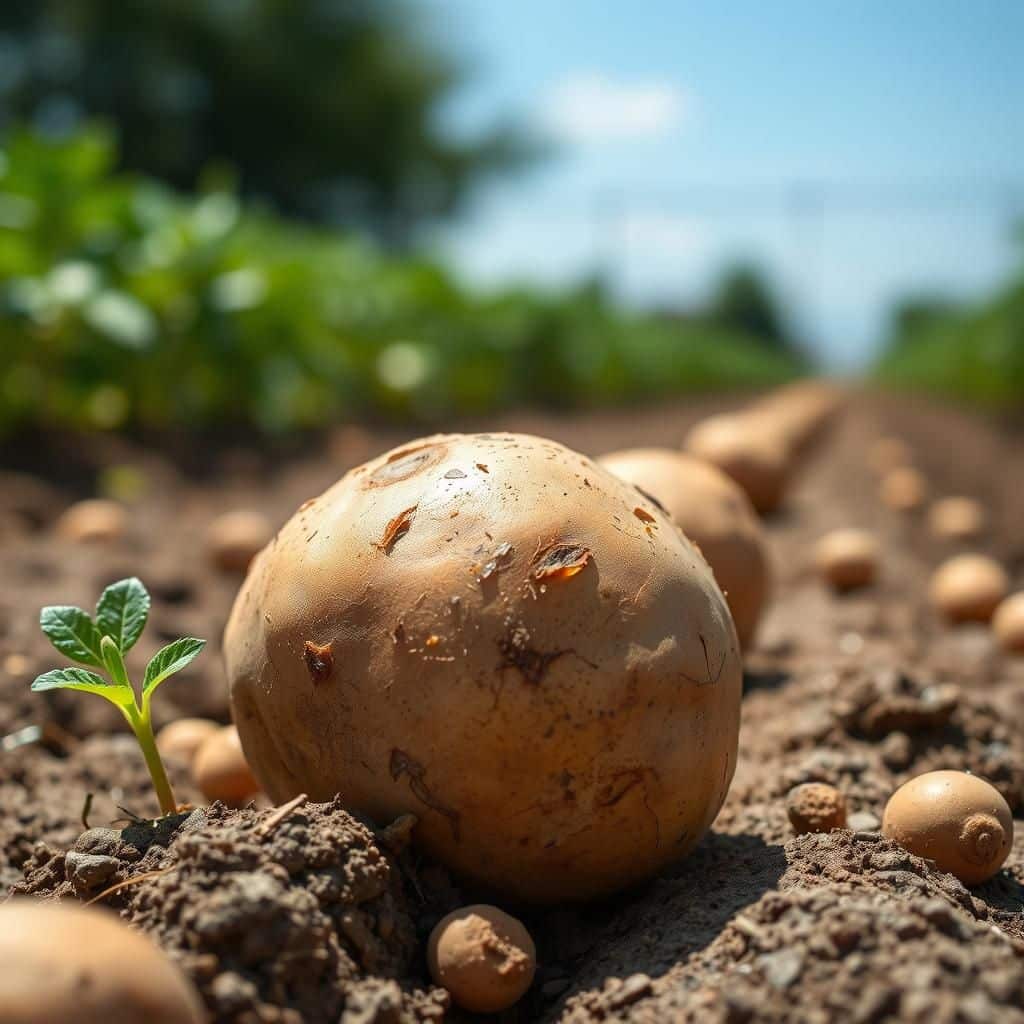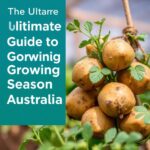The Ultimate Guide on How Far Apart to Plant Potatoes for Maximum Yield

When it comes to cultivating potatoes, one of the most crucial factors influencing your harvest is the spacing between each plant. Proper potato plant spacing not only maximizes yield but also promotes healthier growth by ensuring adequate airflow and nutrient access. In this comprehensive guide, we will explore the optimal distances for planting potatoes, taking into consideration various factors such as soil type, potato variety, and growing conditions. Whether you’re a novice gardener or an experienced farmer, understanding how far apart to plant your potatoes can significantly impact the success of your crop and the satisfaction of your harvest.
Optimal Spacing for Planting Potatoes
When planting potatoes, it is crucial to ensure the right spacing between each seed potato to promote healthy growth and maximize yield. Ideally, you should plant potatoes 12 to 15 inches apart in rows that are spaced 2 to 3 feet apart. This spacing allows ample room for the potato plants to spread their foliage, enhancing sunlight exposure and air circulation, which are vital for preventing diseases and encouraging robust tuber development. The soil should also be loose and well-draining to support optimal growth conditions for the potato plants.
Importance of Row Spacing
The row spacing in potato planting is essential because it facilitates machine cultivation and makes it easier for farmers to manage weeds. Adequate spacing between rows allows for proper air circulation and sunlight penetration, which can help minimize the risk of fungal diseases. Depending on the equipment used, maintaining a distance of 2 to 3 feet between rows is recommended to allow for easy access while planting, hilling, and harvesting.
Factors Influencing Planting Distance
Several factors influence the planting distance for potatoes, including the variety of potato being grown, soil fertility, and local climate conditions. Densely planted areas may lead to competition for nutrients and water, while overly spaced plants might result in underutilized land. It's essential to consider these aspects and adjust the spacing according to the specific needs of your potato variety and local agricultural practices.
Planting Depth Considerations
In addition to spacing, the depth at which potatoes are planted is equally important. Seed potatoes should generally be placed 4 to 6 inches deep to ensure that they are sufficiently buried for protection and moisture retention. Proper depth, combined with the right spacing, enhances overall plant health and contributes to the development of larger and healthier tubers.
See also:
Utilizing Hill Method for Potatoes
The hill method, where soil is mounded around potato plants as they grow, can significantly benefit their spacing and overall productivity. When using the hill method, maintaining a distance of 12 to 15 inches between planted potatoes in rows allows for better access when hilling. This technique supports tuber development and helps keep the potatoes from being exposed to sunlight, which can cause greening and reduce quality.
Suggested Potato Varieties and Their Spacing
Different varieties of potatoes may require slightly different spacing guidelines. For example, larger varieties like Russets may benefit from planting further apart at 15 inches, whereas smaller fingerling varieties might be spaced closer at 12 inches. Here’s a table summarizing the recommended spacing for various potato types:
| Potato Variety | Spacing (inches) | Row Distance (feet) |
|---|---|---|
| Russet | 15 | 3 |
| Red | 12 | 2.5 |
| Fingerling | 12 | 2 |
| Yukon Gold | 12 | 2.5 |
| White Potatoes | 14 | 3 |
Factors Influencing Potato Planting Distances for Optimal Growth
To maximize the yield of your potato crop, it’s essential to understand the various factors that influence how far apart you should plant them. These factors include the variety of potatoes, the type of soil, moisture levels, and the growth habits of the plants. For instance, larger varieties may need more space to ensure that each plant has enough room for stolon and tuber development. Moreover, well-drained, nutrient-rich soil can allow for closer planting, whereas heavier soils may necessitate wider spacing to prevent issues like rot. Ultimately, by considering these elements, you can establish the most effective planting distance to enhance your overall harvest.
Understanding Potato Varieties
Different potato varieties can greatly influence the recommended planting distances. For example, larger varieties such as Russets typically require more space compared to smaller varieties like New Potatoes. Each type has its own growth characteristics and root systems, so understanding these differences will guide you in determining the optimal space needed to cultivate a robust and productive crop.
Soil Type and Its Impact
The type of soil where you plant your potatoes plays a crucial role in how far apart they should be. Loose, sandy soils allow for better drainage and therefore can accommodate narrower spacing. In contrast, clay or heavy soils retain more moisture and can lead to increased risk of disease if plants are too close together. Understanding your specific soil type will help make more informed decisions about planting distances to promote healthy growth.
See also:
Moisture Levels in the Soil
Moisture levels are another vital consideration when deciding on potato planting distances. Plants require adequate moisture for tuber formation, but over-saturated soils can lead to rot and other diseases. In areas with high moisture, increasing the spacing between plants helps to improve air circulation and reduce the risk of fungal infections. Conversely, drier regions might benefit from closer planting to ensure that the soil remains consistently moist throughout the growing season.
Growth Habits and Patterns
The growth habits of potato plants, including their tendency to sprawl or grow tall, also influence planting distances. Varieties that spread more significantly should be given ample space to grow without overcrowding each other. Monitoring how the plants develop during their growth cycle will help you refine future planting strategies and yield better results, adapting the spacing based on direct observations of their growth patterns.
Harvest Timing and Spacing Adjustments
Lastly, harvest timing plays a critical role in optimal planting distances. If you plan to harvest your potatoes at different stages, it's important to consider spacing adjustments to avoid damaging adjacent plants. Early harvests typically need less spacing since the plants are smaller. However, if you're allowing some tubers to grow longer for a larger yield, expanding space between rows and plants can have substantial benefits, allowing for a more efficient and successful harvest overall.
Questions from Our Readers
How far apart should I plant potatoes in rows?
To achieve optimal growth, it is recommended to plant potatoes in rows spaced around 2 to 3 feet apart. This spacing allows for sufficient room for the plants to grow, access sunlight, and receive proper air circulation, which helps to prevent diseases.
What is the spacing between individual potato plants?
When planting individual potato seed pieces, you should place them about 12 inches apart within the row. This distance contributes to healthy tuber development and ensures that each plant has enough nutrients and space to thrive without competing excessively with neighbors.
See also:
Do I need to change the spacing for different potato varieties?
While the general rule is to keep 12 inches between plants, certain potato varieties may benefit from slightly adjusted spacing. For instance, larger or disease-resistant varieties may need more space, sometimes up to 18 inches, to accommodate their growth patterns and maximize yield.
Can I plant potatoes closer together in small garden spaces?
If you're limited on space, you may plant potatoes closer together, at 8 to 10 inches apart, but this can lead to reduced yield and increased competition for nutrients. It is crucial to balance space constraints with the need for healthy growth conditions to ensure a successful harvest.

If you want to read more articles like The Ultimate Guide on How Far Apart to Plant Potatoes for Maximum Yield, we recommend you check out our Seeds category.
Leave a Reply
Related Articles